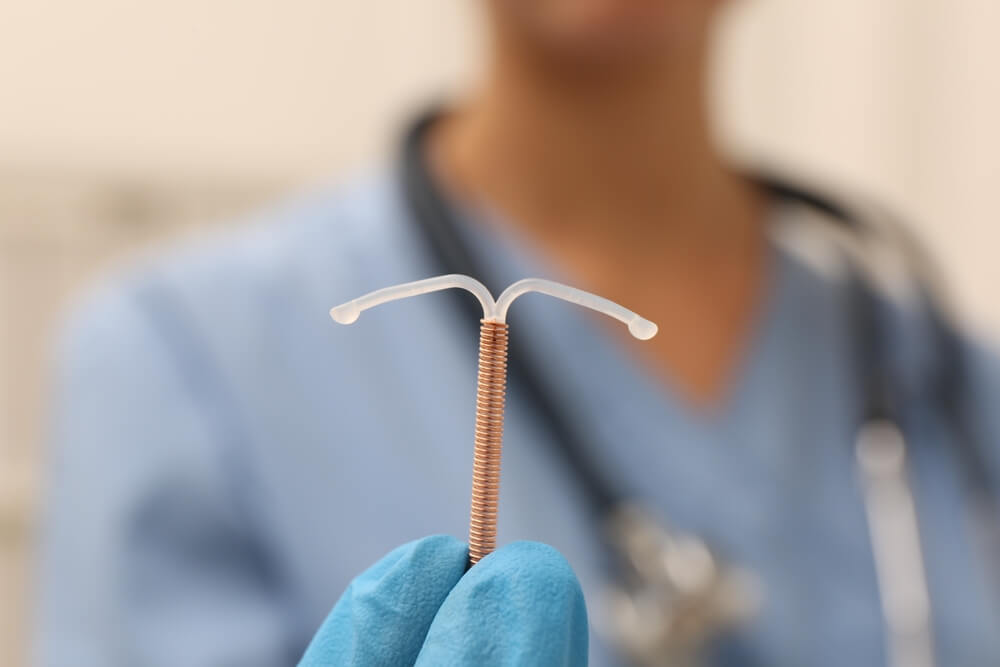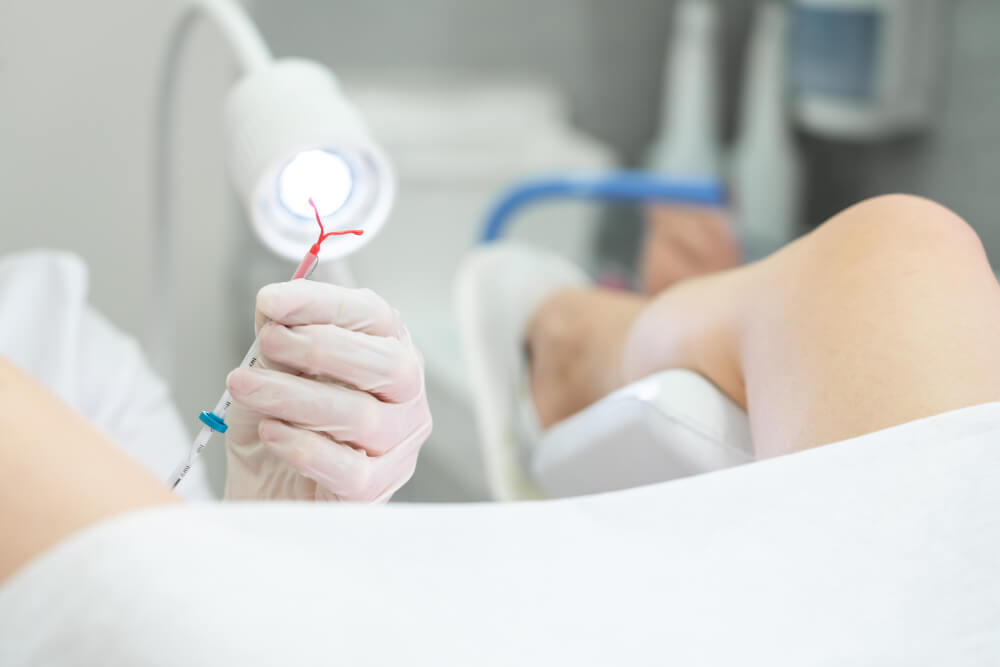An IUD or intrauterine device is a birth control type that healthcare providers insert in a woman’s uterus. Generally, they are considered the most widespread LARC or long-acting reversible contraception type. Once inserted, women don’t have to worry about birth control until the device needs to be replaced (which may vary from three to eight years, depending on the hormonal IUD brand). Also, together with contraceptive implants, IUDs are considered the most effective birth control methods that don’t need surgery. Lastly, if the woman wishes to become pregnant, her provider can simply remove the device.
In a nutshell, that would be about it. Still, the experts at ACE OBGYN know that women generally have more questions and concerns regarding this contraception method, and as such, in this article, we’ll address all of them.
For example, while hormonal IUDs are excellent at preventing pregnancy, they don’t prevent STIs or sexually transmitted diseases like condoms do.
To learn everything about these devices, read on.
The Different Types of Hormonal IUDs
To get started, you should know that there are two main IUD types in general: copper devices and hormonal IUDs. Both of these come in a plastic frame that opens into a T-shape once inserted into the uterus. They also have strings at the bottom, extending into the vagina for easier removal when needed (which should be performed by a trained healthcare provider).
When it comes to the different types of hormonal IUDs, so far, the FDA has approved four different hormonal IUD brands:
- Kyleena®
- Liletta®
- Mirena®
- Skyla®

About Progesterone IUDs
In all these hormonal IUD brands, the T’s top part contains the primary hormone, progestin (levonorgestrel), flowing through the stem. The different variations of progestins are synthetic progesterone, a naturally occurring hormone in the body.
All hormonal IUD brands come with specific elements that help them show during imaging procedures. This is essential for your provider to check the devices during visits to see if they’re still positioned correctly.
Hormonal IUDs are highly popular birth control methods, with around 23% of women using them globally.
Still, they aren’t for everyone. Hormonal IUDs should not be used in the following cases:
- If the user is pregnant.
- If the woman has a sexually transmitted disease.
- If the user is at high risk for contracting sexually transmitted infections.
- If the user has uterine or cervical cancer.
- If the user has unexplained vaginal bleeding.
- If the user has breast cancer or is considered high-risk for breast cancer.
- If the user has severe liver disease.
How Do Hormonal IUDs Work?
Typically, all IUDs work by triggering an immune response. More specifically, the body sees the device as an invader and starts defending itself, resulting in inflammation, which creates an environment in the uterus that’s toxic for sperm. And as a result, the sperm is unable to reach the fallopian tubes and can’t fertilize eggs.
Furthermore, progesterone hormonal IUDs also release small amounts of progestin over time, which thickens the cervical mucus, making it more challenging for sperm to move in the fallopian tubes. The compound also thins out the uterine lining and partially suppresses the user’s ability to release eggs during menstrual cycles.
It’s worth mentioning that not all hormonal IUD brands contain the same amount of progestin or work with the same release rate. For instance, Skyla and Kyleena have less progestin than Liletta and Mirena.
How Long Do These Devices Last?
The different types of hormonal IUDs will generally help prevent pregnancy for the following periods:
- Skyla will prevent pregnancy for three years.
- Kyleemna will prevent pregnancy for around five years.
- Liletta will prevent pregnancy for approximately six years.
- Mirena will prevent pregnancy for eight years.
Depending on other circumstances, like health and age, you may be able to use the hormonal IUD for longer safely. Still, this should be discussed with your provider, and you should always follow their guidance.
Before Inserting a Hormonal IUD
First, your provider will have to see whether you’re a good candidate for this type of birth control based on your lifestyle and general health. Candidates will often get tested for STIs or pregnancy before insertion.
During the consultation before IUD insertion, patients are encouraged to discuss pain management with their provider. While most women tolerate the inserted hormonal IUD without any discomfort, some may feel pain and discomfort following insertion. Taking pain medications after insertion may help lessen the discomfort, and taking them before the procedure may help numb the area.
Also, if you have any concerns or are anxious about these devices, communicate with your provider openly.
During Insertion
The actual process of inserting an IUD takes no longer than around fifteen minutes and can be performed during a simple office visit.
You will be positioned on the table in the same manner as during a Pap smear, with bent knees and legs opened, in stirrup support. Your provider may give a numbing injection to lessen any discomfort. Then, the provider will widen the vagina with a speculum to insert the IUD. During the process, some women may experience a bit of cramping.
After Insertion
After inserting the device, some may not notice any side effects at all, while others may experience mild pain or intense discomfort. In any case, it’s a great idea to allow yourself some rest, just to be sure. Take a few days off, especially if you:
- Feel dizzy.
- Experience backaches and cramps.
- Experience spotting or light bleeding.
Hormonal IUDs will start working depending on where you are in your menstrual cycle. If you’re having your period, they’ll start working immediately. In other cases, it may take up to a week for them to start working toward preventing pregnancy.
Advantages of Hormonal IUDs
Generally speaking, these devices are 99% effective at preventing pregnancy. Furthermore, they also are:
- Cost-effective birth control for long-term use.
- They can be removed at any time.
- Need no maintenance.
- There are no problems with missed birth control shots or pills.
- According to some studies, specific IUD brands may help lower the risk of some cancers and PID (pelvic inflammatory disease).
- They can reduce heavy menstrual bleeding.
- IUDs can relieve the pain associated with endometriosis and menstrual cramps.

Possible Drawbacks
On the other hand, hormonal IUDs may also come with unwanted side effects. For instance, hormonal devices may lead to irregular periods during the initial months following insertion.
Also, the device’s strings may feel stiff at first, but they should soften over time. In any case, consult your provider if the device is causing problems during intercourse. In other instances, IUDs may lead to ovarian cyst development, a common condition that will resolve on its own.
In extremely rare cases, the device may slip out of the uterus or pierce the uterine wall during insertion.
In even rarer cases, women may get pregnant while using an IUD, especially when they are used even after their expiration date, and these pregnancies may lead to complications. This is why it’s pivotal to use the devices as instructed.
Lastly, an infection may occur soon after insertion in rare cases, but your provider can swiftly address this.
Learn More
All in all, IUDs are a safe, convenient, and effective birth control method. To learn more about your options and find out whether you’re a good candidate for them, feel free to contact our experts. We’re happy to answer all your questions or concerns regarding these devices and other birth control methods.

